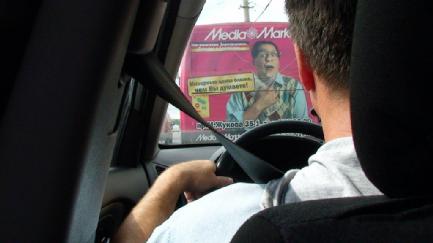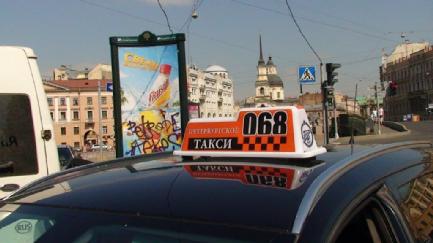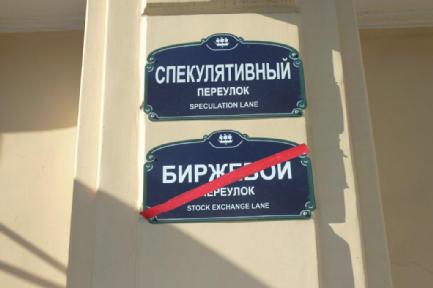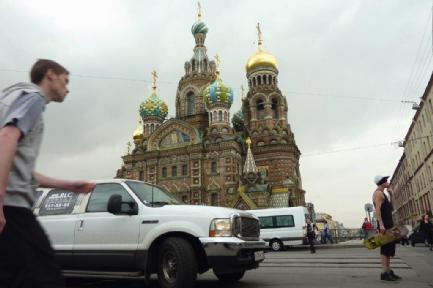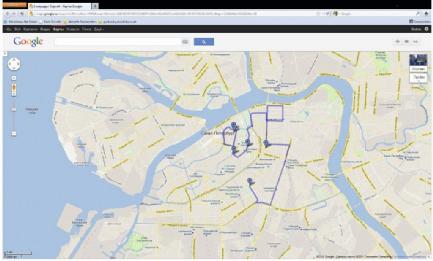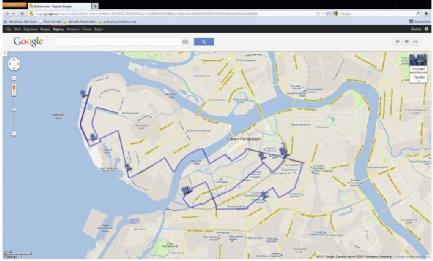The Streets of Hope
The project deals with the dynamic changes of the urban environment of St. Petersburg and brings to the table the bottom up perspective to them. The focus of the project are urban changes seen directly from inside of the city’s tissue – through the eyes of taxi drivers. They are experts in the perception of changes and disruptions as well as in watching daily routine in the long run.
The project addresses the taxi drivers’ expertise of the ongoing urban changes; to see the past, present and future of St.-Petersburg through the lenses of their daily experience of this city; to objectify their vision to the city and their ways of perception of it, their discourse – and to share it with wider public. The drivers were asked for their visions and their practical proposals of changes. Both is fixed in their narratives, in their choice of the areas to visit and in their routes. The suggestions of the new names of the streets reflect the daily experience of these spaces lived by the taxi drivers and their passengers. These names mirror the everyday perception of the particular city spaces, and they were objectified by bringing these names to the map of the city. The project considers taxi drivers to be experts of the city life and space – as city planners, politicians and investors are, and it lets them add their perspective that comes “directly from the road” to this expert discourse of the city. The project gives a voice to a group of unrecognised “experts” in urban changes.
The project is based on an empirical scientific and artistic research. The second step of the project is the transformation of the cognition gained into the public space. The film is presented there for in a car. The vehicle functions as a display and atmospheric platform. The inststallation allows to discuss the newly gained knowledge and to complete it through public participation. A result of the project is a map of St. Petersburg that is displayed for take away inside the car. The map shows renamed streets and squares according to the the taxi drivers' narrations about their feelings and knowledge of the real daily activities of these spaces and the associations to these spaces/places the drivers or their passengers have. The map is open to be completed by passers-by with further comments and supplements. The aim of the project is to create imaginative space where social utopia and reality correlate and concentrate.
The project was realized in co-operation with Center for Independent Social Research, St. Petersburg (CISR) www.cisr.ru Special thanks to Oleg Pachenkov and Lilia Voronkova, (CISR) Supported by: Goethe Institute St. Petersburg www.goethe.de
back...
The project deals with the dynamic changes of the urban environment of St. Petersburg and brings to the table the bottom up perspective to them. The focus of the project are urban changes seen directly from inside of the city’s tissue – through the eyes of taxi drivers. They are experts in the perception of changes and disruptions as well as in watching daily routine in the long run.
The project addresses the taxi drivers’ expertise of the ongoing urban changes; to see the past, present and future of St.-Petersburg through the lenses of their daily experience of this city; to objectify their vision to the city and their ways of perception of it, their discourse – and to share it with wider public. The drivers were asked for their visions and their practical proposals of changes. Both is fixed in their narratives, in their choice of the areas to visit and in their routes. The suggestions of the new names of the streets reflect the daily experience of these spaces lived by the taxi drivers and their passengers. These names mirror the everyday perception of the particular city spaces, and they were objectified by bringing these names to the map of the city. The project considers taxi drivers to be experts of the city life and space – as city planners, politicians and investors are, and it lets them add their perspective that comes “directly from the road” to this expert discourse of the city. The project gives a voice to a group of unrecognised “experts” in urban changes.
The project is based on an empirical scientific and artistic research. The second step of the project is the transformation of the cognition gained into the public space. The film is presented there for in a car. The vehicle functions as a display and atmospheric platform. The inststallation allows to discuss the newly gained knowledge and to complete it through public participation. A result of the project is a map of St. Petersburg that is displayed for take away inside the car. The map shows renamed streets and squares according to the the taxi drivers' narrations about their feelings and knowledge of the real daily activities of these spaces and the associations to these spaces/places the drivers or their passengers have. The map is open to be completed by passers-by with further comments and supplements. The aim of the project is to create imaginative space where social utopia and reality correlate and concentrate.
The project was realized in co-operation with Center for Independent Social Research, St. Petersburg (CISR) www.cisr.ru Special thanks to Oleg Pachenkov and Lilia Voronkova, (CISR) Supported by: Goethe Institute St. Petersburg www.goethe.de
back...
